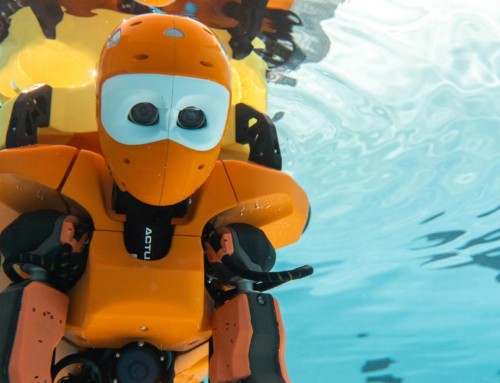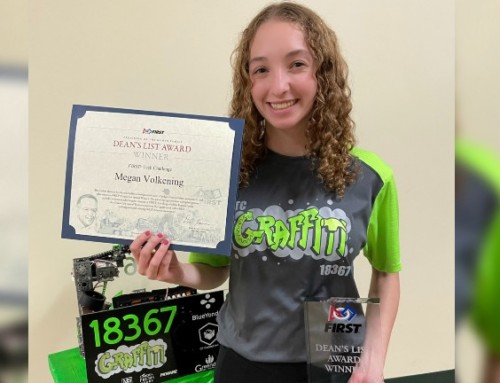[ad_1]
LIMA — Apprentice programs are regaining popularity, driven by low unemployment and high demand for skilled tradesmen.
More than 585,000 Americans were enrolled in apprentice programs during fiscal year 2018, compared to just 357,000 active apprentices reported in fiscal year 2011, according to the U.S. Department of Labor.
Ohio, similarly, has been pushing apprentice programs as an option for students and incumbent workers seeking industry certifications, combining classroom instruction with paid on-the-job training.
State representatives visited Rhodes State College’s campus in Lima on Friday to promote the apprentice programs available in the region, part of a statewide emphasis on in-demand careers.
“Many times, when you say the word manufacturing, people have an outdated notion of what manufacturing is,” said Kimberly Hall, director of the Ohio Department of Job and Family Services.
Those jobs today require “great intellect and ability,” Hall said, as more employers rely on advanced technologies and robotics in their facilities.
Rhodes partners with 14 employers in the region, including the Ford Lima Engine Plant, Grob Systems, Coldwater Machine Company and Dana Manufacturing, Inc., with about 100 students currently enrolled in apprenticeship programs. Those programs were showcased last week during a special demonstration, which drew Hall and other state officials to the Lima campus Friday.
Demand for skilled trades
“We have so much need in the area for skilled workers today, and this is the opportunity for companies to find skilled workers and groom them for (workers) to stay and be successful employees there,” said Tonette Baldin, executive director of workforce economic development and continuing education at Rhodes.
Apprentice programs can take anywhere from one year to four years to complete, depending on training hours and course requirements, said Tamara Eilerman, an associate facilitator of advanced manufacturing initiatives at Rhodes State.
An apprentice may take standard education courses along with more industry-specific classes, such as blueprint reading, robotics and safety, Eilerman explained. She noted that manufacturing-related skills are in high demand here as companies contact the college for help training workers.
Some wait for years to be accepted into an apprentice program.
That was the case for several participants in the UAW Local 1219–Ford Lima Engine Plant program who participated in Friday’s showcase.
“The jobs weren’t available,” said Pam Hicks, a fourth-year toolmaker apprentice with Ford and the UAW. “They stopped talking about trades for a long time.”
But now that the economy is strong and experienced workers are retiring, Hicks said interest in the skilled trades is starting to pick up again.
Changing technologies
Classroom training continues to adapt as new technologies are introduced and companies request new courses to meet demand for specific skills.
“A lot of our programs do focus on repairing robots or PLC (programmable logic control) work, things like that which will always be needed if you’re going to have automation in your facility,” Eilerman said. “You’re going to need people to fix those (machines).”
The college’s robotics program, for example, purchased a collaborative industrial robot through a grant for its robotics program.
“Typically, industrial robots have to have fences around them and light screen guards and gates to keep human beings out of the reach of the robot, (known as) the work envelope,” said Ronald Leonard, an instructor in Rhodes’ robotics program. “This robot is special in that it’s collaborative, (which) means they can work side by side with humans.”
Leonard said working with newer technologies allows students to learn how the machinery works, sometimes before it’s in use by area employers.
Rhodes recently launched a pre-apprentice wastewater treatment operator program for high school students. The short-term program was founded to meet a growing need for wastewater operators.
“They’re recruiting students in the high school and they’re starting some classroom instruction,” Baldin said, “and then they’ll do some on-the-job training.”
Demonstrating skills
Friday’s showcase was an opportunity for students enrolled in the Rhodes State apprentice programs to demonstrate their skills to a wider audience.
Anthony Shear, a second-year apprentice for Dana, showed onlookers how to strip excess material in a process known as subtractive manufacturing.
His instructor, Charles Butcher, explained that the process is needed to strip material from broken parts so they can be refashioned.
“This process actually removes material, whereas when you get into 3-D printing you’re depositing material,” said Butcher, the chair and assistant professor of integrated systems technology at Rhodes.

Anthony Shears trims a tool during a demonstration at the Rhodes State In-Demand Jobs Fair Friday. Shears is a second-year toolmaker apprentice with Dana Corp. in Lima.

Ronald Leonard, an instructor at Rhodes State College, explains how collaborative industrial robots are safer for workers than typical industrial robots.
Reach Mackenzi Klemann at 567-242-0456.
[ad_2]
Source link





Leave A Comment
You must be logged in to post a comment.